When I first started experimenting with chain stitches, I had no idea how much the right needle could make a difference. After a few tangled messes (and a little frustration), I found my favourite chain stitch needle.
Which is.
Needle
Sharp embroidery needle medium-sized eye. It’s perfect for piercing fabric smoothly and holding thicker embroidery floss without a fight.
Trust me, the chain stitch flows once you’ve got the right needle. It’s like finding the right paintbrush—you suddenly enjoy every loop!
Main facts:
- A full barb needle is perfect for a machine chainstitch.
- Sharp 7 size needle is best for hand chainstitch.
- Cotton 2-stand embroidery thread is best for chainstitch embroidery.

Table of Contents
Which Needle Is Used For Chain Stitch?
I’ve learned that using the right needle makes all the difference. Especially depending on the kind of stitch or fabric I’m working with.
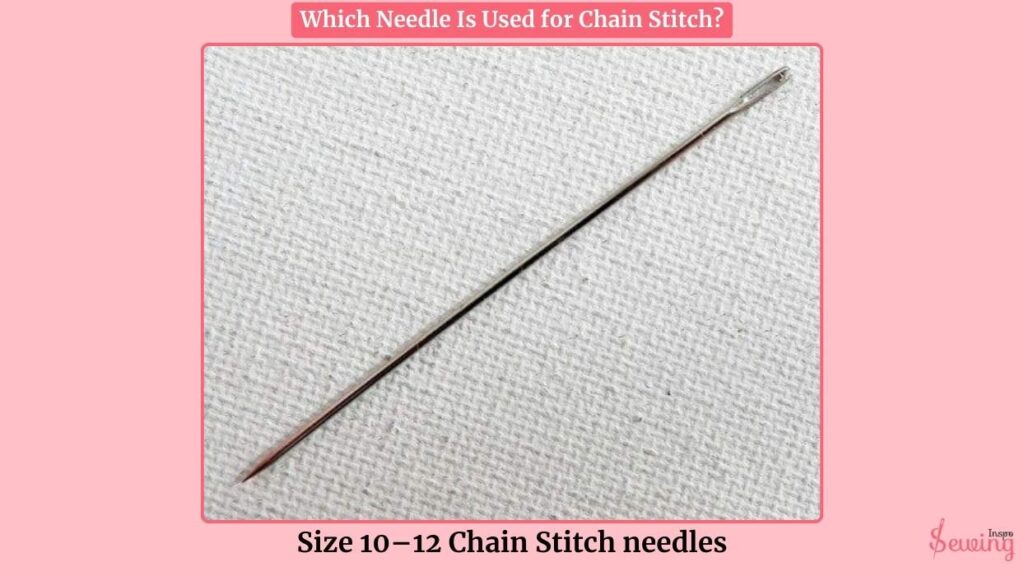
For most industrial or commercial chain-stitch embroidery,
I like using full barb chain stitch needles they’re the gold standard. And I go for short barb hook needles when I add some decorative chenille stitching (like on varsity jackets or bold designs). They glide through thick materials like a charm.

For hand chain stitch embroidery,
I usually reach for a sharp embroidery needle. Here’s what I’ve found works best:
- Size 6–8 needles-Great for cotton, wool, or other medium-weight fabrics or for Cable chain stitch.
- Size 10–12 needles-Perfect for delicate fabrics like silk or linen. This size is even perfect for raised chain band stitch embroidery.
- PH-C120 chenille needle-I love this one for delicate work; it has a smaller hook so it doesn’t snag fine fabric

Honestly, once you find your go-to needle, everything stitches so much smoother. That’s what is stitches. If you understand it correctly, then you can use it correctly too.
Chain Stitch Needle Size Chart
If you search on Google or shop, you will come across all kinds of needles. Honestly, all of them work but in different situations. For example,
| Needle Type / Size | Thread Weight | Fabric Type |
| Size 6 (Hand) | Medium to heavy | Cotton, wool, denim. (perfect for detached chain stitch patterns) |
| Size 8 (Hand) | Medium | Cotton, linen, blends (perfect for twisted chain stitch embroidery) |
| Size 10 (Hand) | Fine | Silk, light linen, muslin are perfect for the double chain stitch pattern. |
| Size 12 (Hand) | Very fine | Organdy, chiffon, tulle |
| PH-C120 Chenille Needle | Medium to fine | Velvet, fine cotton, delicate fabrics. This needle is most suitable for bookbinding chain stitch. |
| PH-C70 Chainstitch Needle | Medium to heavy | General chainstitch use |
| PH-C70SB Short Barb Needle | Medium to heavy | Chenille, fleece, bold designs |
| 253 Chainstitch Needle | Heavy-duty | Thick fabrics, commercial use |
| 253SB Short Barb Needle | Medium to heavy | Jackets, fleece, embroidery. You can also use this needle for the lock stitch. |
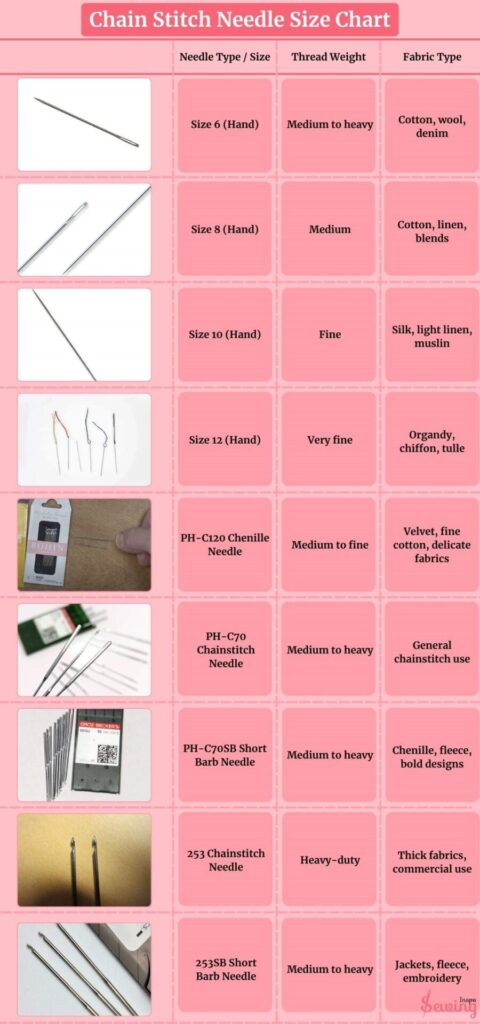
Well, so Which is best chain stitch needle size for beginners?

I’d say a size 8 chain stitch needle is best for beginner embroidery projects. Then, adjust up or down depending on your fabric or how delicate your thread is.
Chain Stitch Embroidery Needle

You need to be extra careful when you are doing embroidery. You don’t want to ruin that beautiful project only because of the wrong needle. So, for chain stitch embroidery,
I like using sharp hand embroidery needles—sizes 6–8 for cotton or wool and 10–12 for finer fabrics like silk. If I’m doing decorative or chenille-style stitching, I’ll grab a short barb hook needle like the PH-C120 to avoid snagging.
That needle works just fine and makes the perfect work.
Chain Stitch Thread Guide
After the needle choice, it’s time to choose the needle. When I started chainstitching, I thought any old thread would do the job.

Spoiler: nope. 😅
Choosing the right thread totally changes how your chain-stitch looks and feels. The most popular thread choice is Aurifil 12 weight. This thread works most perfectly on reverse chain stitch.

But over time, I’ve tried a bunch, and here’s what I’ve learned from my stitchy experiments:
Cotton Embroidery Floss (usually Size 25) – Super versatile and easy to control
I usually use 2–3 strands for a balanced, neat look. It is Great for small designs or delicate fabric like muslin or linen If I want more dimension, I’ll bump it up to 4 strands for chunkier chains
Perle Cotton (aka Pearl Cotton – Size 5 or 8 are my faves)
It is Slightly glossy with a nice twist that pops and doesn’t separate like floss, so no strand-count stress. I go for Size 8 when I want delicate detail, and Size 5 for thicker, statement lines. I Love this for bold outlines and when I want a bit of texture.

Wool Threads (usually Crewel Wool or Tapestry Wool)
I use this mainly with heavier fabric like wool felt or canvas. Since it’s fluffier, I don’t worry about strands—just one go, and it’s textured enough. Definitely need a larger needle (I use a chenille needle, Size 18–22)
How To Thread A Needle For A Chain Stitch?
Have you got your thread and needle? Great, now it’s time to thread the needle. That’s where people struggle too. I won’t leave my readers to be confused. So here is how threading needle works,

- Cut about 18–20 inches to avoid tangling. Use sharp scissors for a clean end.
- Flatten the end with your fingers and slide it through the needle’s eye. If it’s tricky, a needle threader can help.
- Single thread: Pull one end through, leave a tail, and knot the other end.
- Loop method (for even strands): Fold the thread, thread the loop end, and anchor the first stitch by passing the needle through the loop—no knot needed.
- Tie a small knot or anchor the thread under a few back stitches to start your chain stitch cleanly.
Frequently Asked Questions
What Kind Of Needle Is Best For ChainStitch?
A crewel (embroidery) needle is ideal. It has a sharp point and a large eye to fit multiple strands of thread.
Can I Use A Regular Sewing Needle For ChainStitch?
Technically, yes—but it’s not ideal. Regular needles have small eyes and can shred embroidery thread or make stitching harder.
What’s The Difference Between Crewel And Chenille Needles?
Both have large eyes, but chenille needles are thicker and work better with heavy threads or fabric. Crewel needles are slimmer and great for detailed work.
Outro
So yes, that’s my guide to chain stitch needles, or you can say I like to use those needles for my projects. Of course, the needle choice varies depending on the project. But no one ever complains about my needle recommendation, and I am sure you won’t, either.
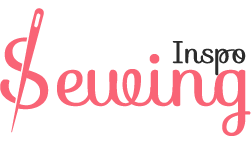
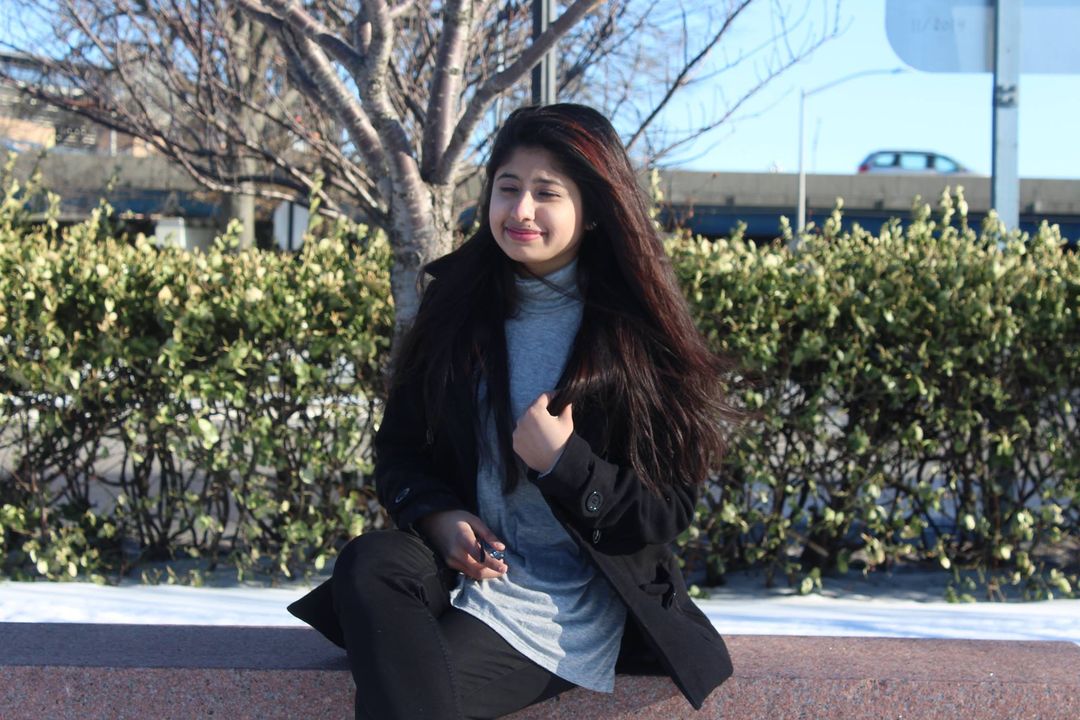
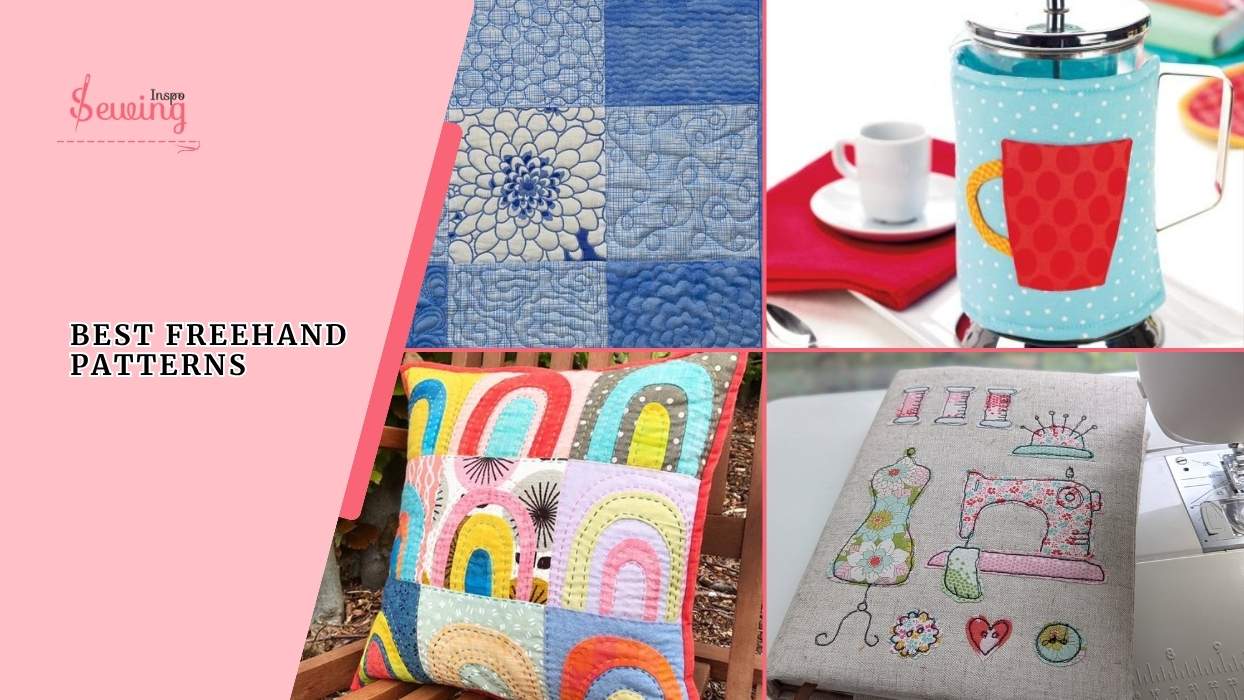
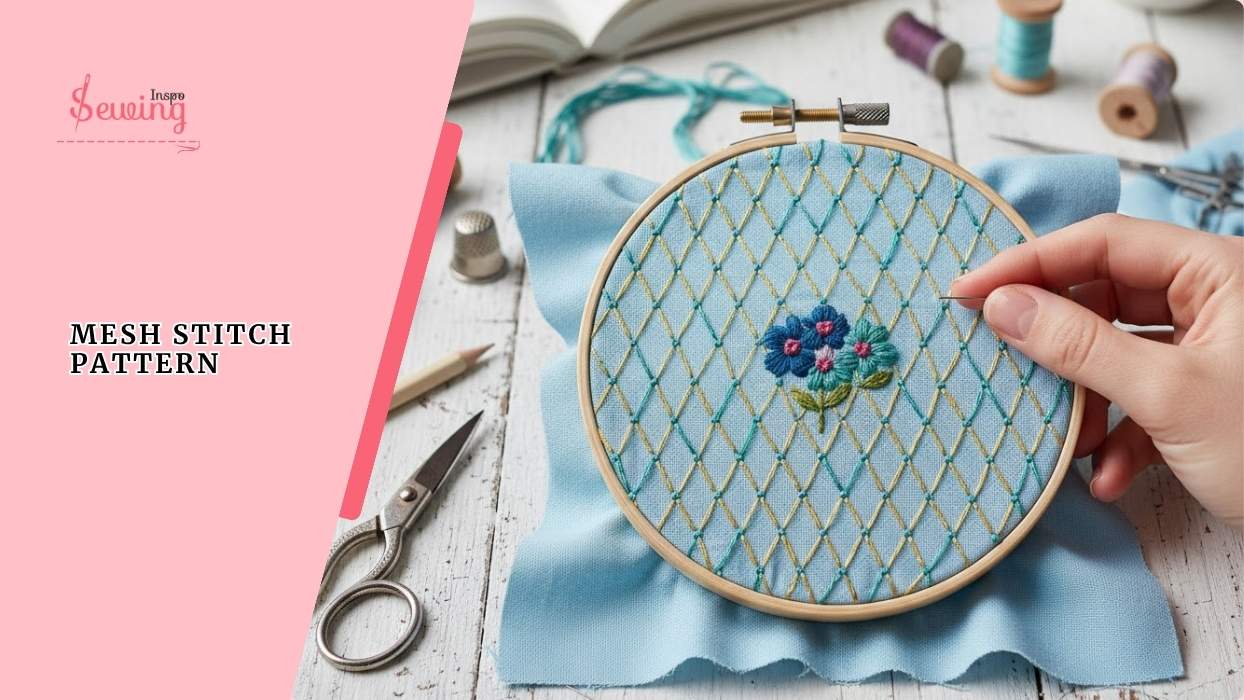
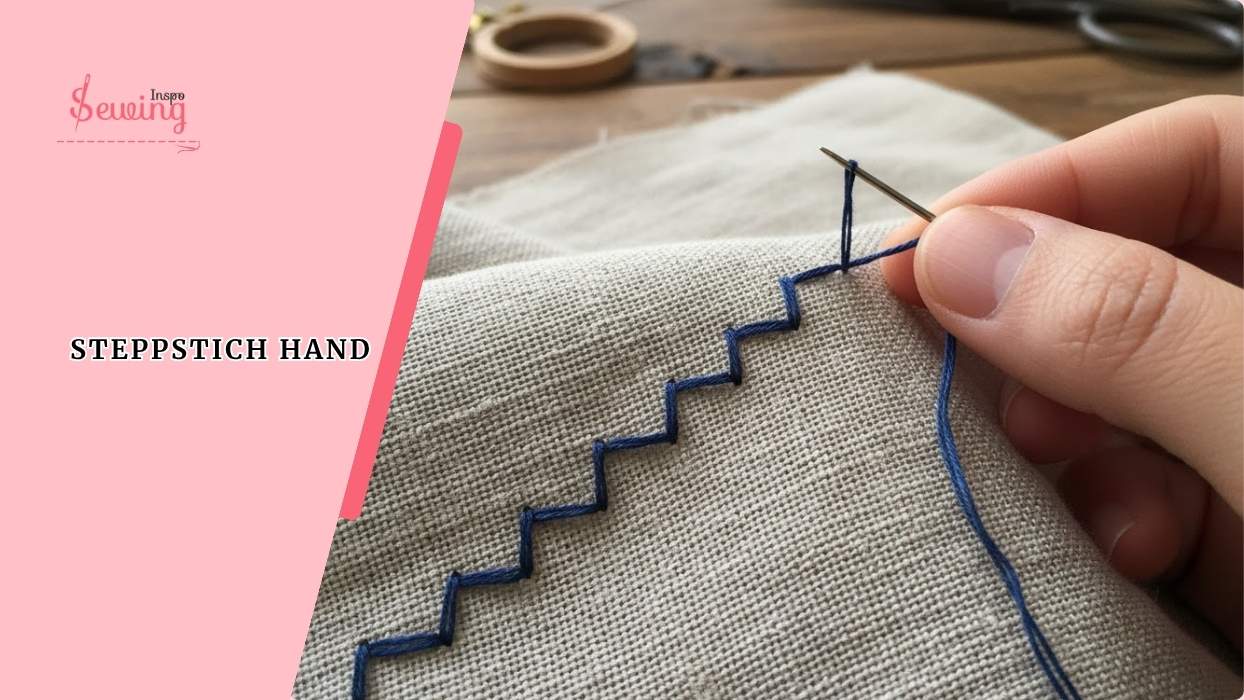
Leave a Reply